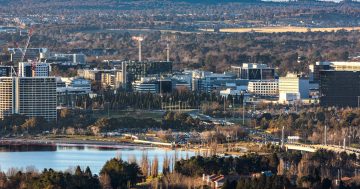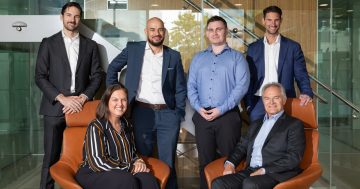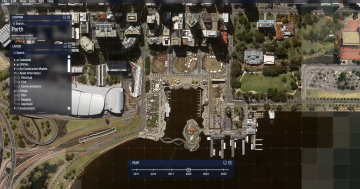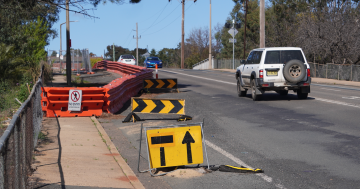Bas Steunebrink* says digital twins can more accurately capture the dynamics of real-world systems by learning the complex relationships between variables that are necessary to reduce prediction errors.
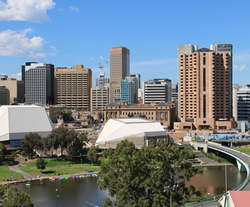 Lugano, Switzerland has long suffered from traffic congestion on its lakefront thoroughfare, and, like many cities, faces the often-competing needs of commuters, residents and tourists.
Lugano, Switzerland has long suffered from traffic congestion on its lakefront thoroughfare, and, like many cities, faces the often-competing needs of commuters, residents and tourists.
To reduce that competition and ensure more fair and efficient use of infrastructure, city officials are using artificial intelligence to develop digital models that will enable them to “pedestrianize” the lakefront at various times of day, while diverting and managing vehicle flows depending on need and traffic density.
This is just one example of how AI-powered digital twins — which have had a huge impact on improving industrial production and processes — are being adopted by cities seeking to tackle urban challenges like traffic, garbage collection and air quality.
While this technology can potentially provide major benefits for the development of urban policy, there are also serious challenges.
Unlike factories which are composed of inanimate machines and products, cities are managed from within by actors with vested and changeable interests, who also need to cater to the dynamic and competing needs of residents, visitors and businesses.
One key for successful use of these models in cities is to start small and have specific goals, and not try to solve all of the city’s problems at once.
Digital twins are virtual models designed to reflect the physical characteristics of real-world objects.
Analysts can use them to seek out inefficiencies and recommend improvements.
Digital twins have proven their capabilities in a wide and diverse variety of industries and businesses.
Manufacturers, retailers, utilities and medical researchers have all adopted them as a way to solve technological and operating issues, making their systems more efficient and effective.
Digital twins in manufacturing
In manufacturing and other fields, advanced third-generation digital twins take the concept to the next level by developing and building the process model directly from gathered data.
In short, the system uses machine learning to build models based on real-world data, instead of relying on pre-programmed models.
These deep digital twins can more accurately capture the dynamics of real-world systems because the model learns the complex relationships between the measured variables that are necessary to reduce prediction errors.
Once trained, live data can be fed into the model to forecast how its physical counterpart will behave under a wide range of scenarios, enabling analysts to solve complex and endemic problems.
The same works for cities: with data about traffic, for example, municipalities can build models of vehicle usage, rush hours, and the use of public transportation.
By tweaking the model – for example, changing the timings of red and green lights at a key intersection – municipalities can better determine what policies should be implemented to shorten commute times, relieve traffic volume, increase use of public transportation, or any other policy goal they seek to implement.
But digital twins need constant, empirical data to work their magic – and the data surrounding cities is anything but constant.
For example, to do traffic analysis properly, one needs to take into account a large number of co-dependent variables which change a great deal.
Traffic jams can be triggered by a wide variety of factors: weather, work actions by public transport workers, traffic accidents, whether a slow truck is making its way down the highway, protests, and many more.
It’s almost impossible to accurately predict many of these things – and without the requisite constant, verifiable data, digital twin technology is likely to be far less effective in setting an overall and comprehensive traffic policy than in determining how to make production more efficient.
The same holds true for other urban issues, including sanitation, education and housing.
All of those issues are likely to be far too complicated to be resolved completely across any city using data analysis.
Administrators using advanced digital twins will likely have more success if they apply models to specific problems.
So in Lugano, instead of trying to solve all the traffic problems at once, city planners moderated the scope of analysis, and are using the data to focus on endemic traffic issues around the lakefront that have resisted resolution.
This allowed the city to start to develop a policy that will provide for the opening and closing of various streets at specific times of the day, seeking to achieve a balance between the demands of residents, preventing traffic jams (and the accompanying air pollution), providing opportunities for leisure, and accommodating both commuters and tourists.
Data analysis for improving the quality of life in cities is not limited to traffic.
It can help prevent overloaded trash bins on specific streets by recommending enhanced schedules for trash collection; it can help police determine and deploy the right number of officers to ensure public order during mass events; it can help cities determine when to perform maintenance on infrastructures such as bridges and roads to prevent problems before they happen.
Lugano reaps the benefits of digital twins
One thing the city of Lugano has discovered through its data-driven pilot projects is that even small adjustments can have a major impact on increasing the quality of life.
Now, with the success of several pilot programs, Lugano is preparing to expand its analysis efforts to include additional specific pain points in the movement of people.
The more successful projects the city is able to deploy, the more daily life and mobility will improve throughout the city – creating a de facto overall municipal policy that will ensure maximum effectiveness, enabling traffic to flow as smoothly as possible and minimizing the inconvenience to residents and visitors alike.
Giorgio Maric, the head of the urban statistics office for the city of Lugano, says the city “is actively using data to set city policy, for example, in decisions on where to build new schools.
Until now we based such decisions on traditional metrics usually used by governments, such as the population of neighborhoods; the more residents, the greater the need for more schools.
However, once we looked at data on where and what hours parents work, what kind of public transportation is available, traffic patterns, etc, we were able to find the most efficient locations for building schools.”
“We can also integrate this with other policy issues,” said Maric.
“This includes designing public transportation and optimizing traffic.
“By using data in this manner — and inputting it into a digital twin to determine how it will work in the real world – we can conduct predictive analysis to not only improves residents’ quality of life, but move forward in automating the administrative processes of the city — a goal that we can achieve with AI and digital twins.”
All cities have their challenges, whether it’s traffic, waste collection, crime or maintaining infrastructure.
Artificial intelligence may not be able to solve all these problems on a macro level.
But well-thought-out digital analysis strategies, including AI-based digital twin models, can be helpful in solving municipal issues at their core.
If data analysis can help ensure safer, cleaner and more navigable cities, it will have done its part to improve the quality of life for that city’s residents.
And strong cities are essential elements for strong communities – and strong nations.
With AI, leaders can make cities more liveable places, attracting quality residents – and ensuring a quality future for residents of cities, and beyond.
*Bas Steunebrink is cofounder and director of general purpose AI at NNAISENSE.
This article first appeared at venturebeat.com.


